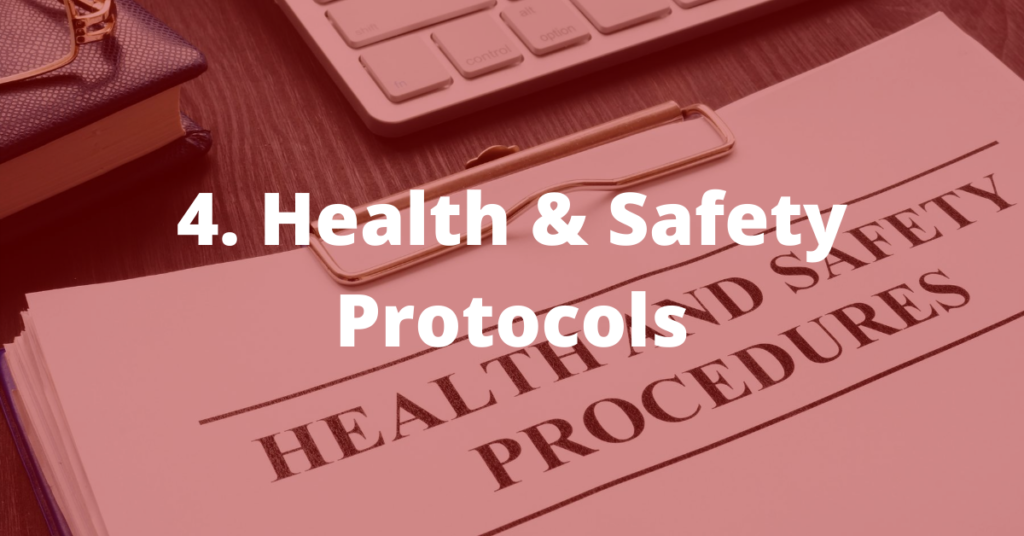We previously discussed how hospitals are handling the coronavirus pandemic. We looked at measures hospitals can take to protect employees and stop the virus from spreading by isolating patients. We also discussed how hospitals can navigate the new normal COVID-19 has created. While these blogs covered some of the basics of how providers can survive the pandemic and adjust to the new normal, merely staying afloat isn’t enough. So how can hospitals not only survive, but also thrive during COVID-19? Let’s look at seven key elements that can help hospitals thrive during these difficult times:
- Strong Leadership
- Clear Communication
- Focus on Employees
- Proper Health & Safety Protocols
- Strong Supply Chain
- Adaptable Revenue Streams
- The Right Tech
1. Strong Leadership

The first necessity to surviving and thriving during the pandemic is strong leadership. A strong, competent leadership team is paramount to any hospital’s success even during normal times, but it’s even more important during times of upheaval. The COVID-19 pandemic has affected every industry, and virtually every company is faced with problems they’ve never dealt with before. A recent Forbes article highlights three key tips for leaders to support their teams through times of crisis:
- Lean on company leadership – Ensure company leadership teams communicate company updates and policies to their subordinates.
- Establish regular communication networks – Clearly communicate new policies and procedures, encourage employee feedback and questions, and ensure employees feel comfortable adapting to their new work environments.
- Show employees you care – Prioritize employees’ well-being and safety, and keep them updated on the company’s recovery to ensure they feel valued.
You may have noticed some common themes among these three leadership tips: communication and care. In any crisis, communication is key. During a pandemic, employees’ mental and physical well-being is just as important. Since these two elements are paramount, we’ll cover both of them in the next two sections.
2. Clear Communication

All three components of strong leadership mentioned in the Forbes article involve communication. While you may have a strong communication plan, the COVID-19 crisis presents specific challenges. Ragan Communications, a leader in corporate PR and communications training, offers these tips for communicating with employees during the pandemic:
- Communicate early and frequently.
- Remain focused and consistent.
- Be clear and calm.
- Set up a mobile-friendly source where employees can find the latest information.
- Designate a communications authority.
- Encourage questions and feedback.
- Show employees you care.
As many staff members are on the frontlines of fighting COVID-19, it’s imperative to establish reliable, trusted communication channels. It seems new information is learned about the virus daily, and this information needs to be quickly, yet calmly relayed to employees. COVID-19 has led to all-time high stress levels for many healthcare workers, so it’s crucial to show empathy and assuage their fears during this time. Encouraging two-way communication and answering questions can help reduce employees’ stress. In the next section, we’ll look at some more ways to focus on employees.
3. Focus on Employees

While communication is essential for strong leadership during times of crisis, a focus on employees’ well-being is equally important. By the nature of their jobs, healthcare workers are especially vulnerable during the pandemic. A recent Forbes article discusses ways employees can support their employees. In addition to communication, the article also recommends the following:
- Have a plan in place to address cross-training, employee absences, and other employee needs.
- Review sick-time/leave policies, ensure they comply with updated federal and local policies, and be flexible as employees may need to care for themselves or sick relatives.
- Consider remote work and part-time work if and when possible, especially for non-patient facing staff.
- Encourage employees to tend to their own physical and mental well-being.
4. Proper Health & Safety Protocols

As patient confidence in returning to hospitals and health clinics increases, it’s paramount to adhere to proper health & safety protocols. Some important steps hospitals can take to reduce the risk of COVID-19 exposure at their facilities include:
- Screening patients, visitors, and employees for COVID-19 symptoms at all entrances.
- Separating COVID-19 positive and possibly positive patients from non-positive patients.
- Regularly disinfecting and sanitizing equipment and surfaces.
- Quarantining staff who are directly exposed to COVID-19 patients.
For more guidelines on dealing with COVID-19, visit the CDC’s Information for Healthcare Providers page.
5. Strong Supply Chain

Ensuring employees’ well-being and adherence to CDC COVID-19 guidelines requires strong supply chain management. At the start of the pandemic, hospitals faced dire PPE shortages that required frontline staff to reuse contaminated equipment. This illustrated the need for supply chain management. Fortunately, providers learned valuable lessons from the first wave of the pandemic. Some of the supply chain measures hospitals are taking to prepare for a second wave of COVID-19 include:
- Stockpiling PPE, cleaning supplies, and medications
- Implementing a reliable and flexible ERP system
- Acting on analytics
- Incorporating an information management platform
For a more in depth discussion on supply chain management and what hospitals are doing to improve it, check out our recent blog.
6. Adaptable Revenue Streams

The COVID-19 pandemic has had a heavy economic toll on the healthcare industry, largely due to the postponement and/or cancellation of elective surgeries. In worst-case scenarios, hospitals and physician practices have had to permanently shut down. For many providers, even the best-case scenario seems to be minimizing revenue loss and hoping to recoup those losses in the coming years. Amongst all the uncertainty of the pandemic, one thing is clear: healthcare providers must reevaluate their revenue streams and adapt. The days of simply counting on patients having elective procedures are behind us. Healthcare providers must find new ways to provide care and generate revenue, such as:
- Telehealth – Telehealth visits have exploded since the start of the pandemic and offer a revenue stream for providers even amidst a viral outbreak. As more patients have positive experiences with telehealth, demand is expected to grow.
- Physician Referrals – Patients trust their physicians, which makes physician referrals a great revenue stream. Hospitals should focus on strengthening their relationships with referring physicians in order to maximize this revenue source.
7. The Right Tech

The six elements for thriving during the COVID-19 pandemic only work if executed properly. Oftentimes, this involves having the right technology in place. Let’s look at some of the tools that can help you thrive:
- Acumatica Cloud ERP – A cloud ERP like Acumatica enables employees to access the information they need to do their jobs anywhere they have an internet connection, which is essential for remote employees, and can strengthen your supply chain management initiatives.
- CryptoChart image sharing – CryptoChart enables contactless, HIPAA-compliant image sharing for radiology departments via scannable QR codes and secure links.
- iOrder medical order management software – iOrder strengthens your relationship with referring physicians and improves patient experience by streamlining order-entry workflows, providing order transparency, eliminating faxes, and providing clinical decision support to eliminate coding mismatches, inappropriate exams, and unnecessary rescheduling.
Conclusion
It’s been difficult enough for many hospitals to survive the coronavirus pandemic. For those who have, many questions still linger. What does the future look like? How long will the pandemic last? Will we recoup our revenue losses? With the unpredictability of COVID-19, many providers are left worrying if and when normalcy will return.
Fortunately, there are measures hospitals can take to not only survive, but thrive during COVID-19. It starts with strong leadership with a commitment to clear communications and a focus on employees. Ensuring the safety of employees and patients is paramount to keeping the doors open and revenue flowing in. This is why it’s important to adhere to proper safety and health protocols, such as CDC guidelines, and maintain a strong supply chain with a focus on stockpiling PPE and disinfectants. As traditional revenue streams, such as elective surgeries, have been impacted by COVID-19, hospitals should pursue other options, such as telehealth and physician referrals. Finally, implementing technology that enables remote work, minimizes physical contact, strengthens relationships with physicians, and improves patient experience is also vital.
If you’d like to learn more about how we can partner with you to help you thrive during both normal times and times of crisis, check out our interactive partnership lifecycle diagram or contact us today.




